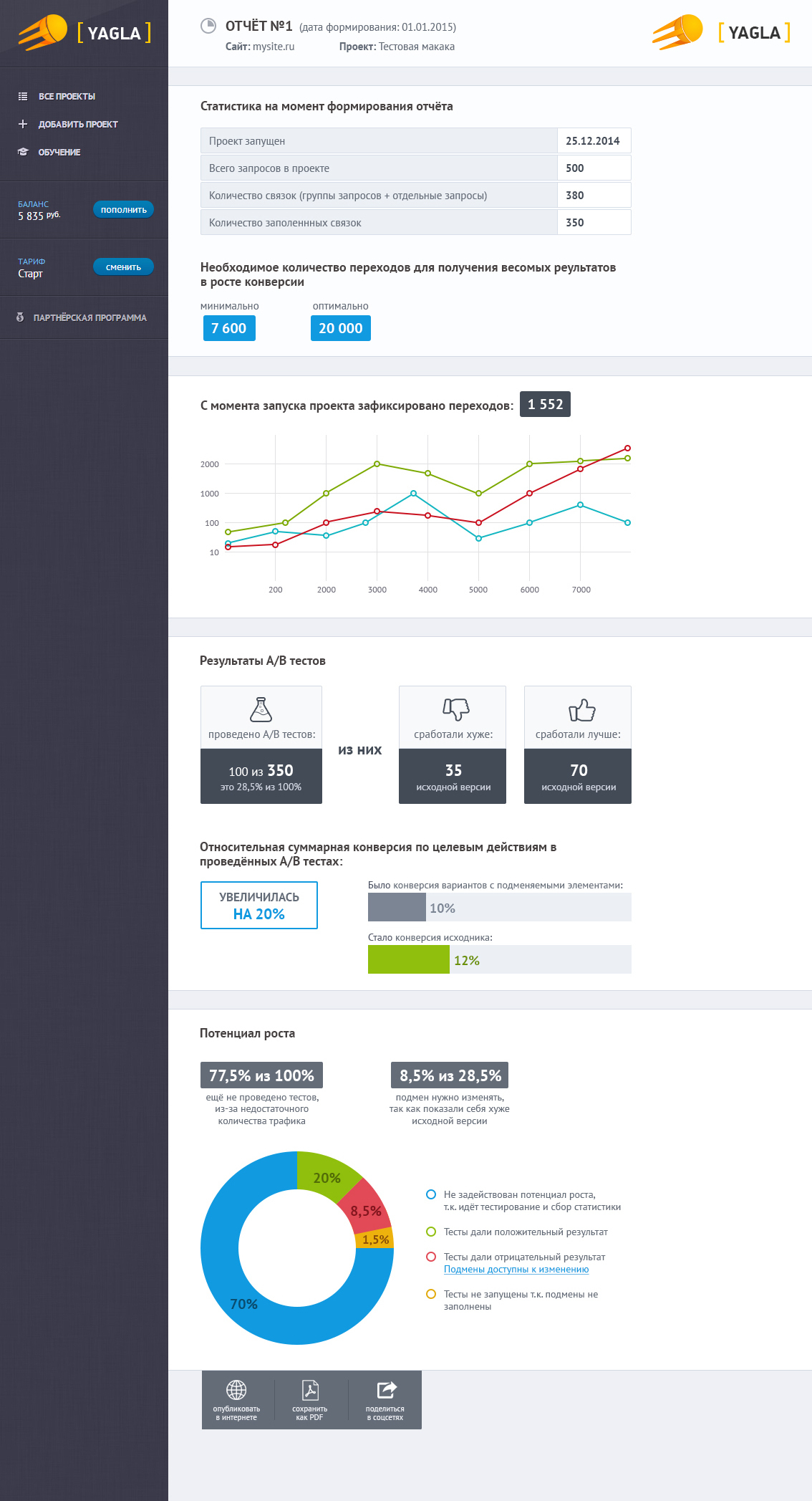How to increase return on contextual advertising: Responsive Content

In the past few years, the personalization of everything and everything on the Web has gained immense popularity. Now the search results are “sharpened” for a specific user, many companies make personalized mailing lists, online stores show products suitable for you.
But you can personalize the site content itself, which the user visits. We developed the Yagla system, which helps to increase the return on contextual advertising by changing the first screen of the site (or any other part of it) so that it better matches the search query of the visitor. Today we will talk about how it all works.
')
What is what
Yagla can change the headers, text, pictures and inscriptions on various elements of the site depending on the search query that led the user to the site. All these "substitutions" are configured manually, which allows you to get a pleasant and understandable to the human eye result, and not just a "stupid" mechanical replacement of the header directly to search queries.

What is the difference from product recommendations
There are systems that analyze data obtained from various sources (user profile and machine learning) in order to show the user products that he buys with a higher probability (for example, RetailRocket or Crosss). For landing pages (landing pages) such services show product calculations for certain stocks, under which landing pages were made.
With the help of responsive content, you can go further and create personalized offers. For example, at the request of “windows on credit”, the Yagla system shows the title “Plastic windows are the cheapest loans in the city”, and the user, who came to the query “plastic windows to the country”, will show the text titled “Plastic windows adapted specifically for your dacha ”and replace the inscription on the button with a simple“ Buy ”to“ Buy to the country ”. Commodity advisory services are simply not capable of this.
In addition to simple substitution, we conduct A / B tests in order to identify the most effective headline options compared to the original one.
Why do you need it
The main task of adaptive content is to increase the impact of contextual advertising. That is, to use, for example, the Yagla service costs those who have landing pages and contextual ads used to direct traffic to them.
Habitual services to automate the conduct of campaigns of contextual advertising can at best bring business savings of 30-40%, the use of adaptive content (for example, changing the headings for a number of segmented queries) can lead to an increase in conversion tenfold ("hypersegmentation"). Accordingly, the cost of attracting a client using contextual advertising in this case drops significantly.
How it works: real example
Suppose there is a company from Moscow that manufactures and sells windows. Today, contextual advertising in this niche is unprofitable (the price of a click can go up to 40-50 cu), but it is necessary for the production load due to seasonality.
Thus, the task of the company is to reduce the cost of the attracted client so that such advertising campaigns are not unprofitable, and even better bring profit.
Yagla works with both those who have already configured contextual advertising, and with those who need to configure it from scratch (we help to do this). Starting work with a new client, we analyze data, for example, Yandex.Metrics and identify requests with the lowest efficiency (maximum failure rate), which usually do not lead to any useful actions (buying, receiving email addresses, etc.). ).
Next, we work with such requests (and not just turn them off like so many others) and set up adaptive content for such requests, which will translate this traffic in the right direction. By deactivating these requests in the contextual campaign, we bring them into a separate advertising campaign and connect the Yagla system. Thus, the bounce rate decreases from 2 to 6 times, and such requests begin to generate revenue.

If an organization does not have a customized contextual campaign, then Yagla provides a “adaptive context” service (passing your budget for contextual advertising as an agency), which involves segmenting advertising requests, setting up each offer segment (“offer”) in the system and testing .
For example, for the “window” theme, the action scheme may be as follows: setting up about 500 keywords, synchronizing the system, marking up landing elements that will be replaced (screenshot below), installing a special code and selecting goals. Next, the system conducts a series of A / B tests, which compares the work of the original version of the page and the variant with the replaced elements.
Thus, the system will tell you if it turned out that the effectiveness of adaptive content set up by company representatives is worse than the original version of the web page (landing page). After we receive the traffic, the system issues the statuses of the A / B tests performed and reveals for which requests the replaced elements worked worse. We rewrite these substitutions based on the test results.

findings
Adaptive content is a good way not only to increase website conversion, but also to significantly improve the results of contextual advertising campaigns without significant investment of funds. The configuration with 5 landings and 30 advertising campaigns will cost 1900 rubles - a good price for increasing the conversion several times.
Today, everything in our following materials will tell you about the technical side of our project and how adaptive content can help companies from different industries.
Source: https://habr.com/ru/post/286980/
All Articles